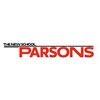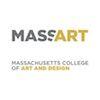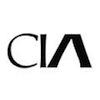Ringling College of Art and Design (RCAD) was founded in 1931 by Dr. Ludd M. Spivey, president of Southern College (now Florida Southern College) and circus baron, John Ringling. When it opened, the school had just 75 students and 111 course offerings. Today, RCAD serves more than 1,600 students from 45 states, 60 countries, Washington D.C., and Puerto Rico.
This private, not-for-profit college offers BFA degrees in eleven disciplines and BA degrees in two. Students in all programs benefit from RCAD’s “rigorous curriculum” that the school says “employs the studio model of teaching and immediately engages students through a comprehensive program that is both specific to the major of study and focused on the liberal arts.” Students also benefit from visiting artists from major studios such as DreamWorks and Blue Sky Studios, focused internship opportunities, and the chance to work with local businesses on real-world projects.
Program options for aspiring illustrators include a BFA in Illustration with a General Illustration or Visual Development Emphasis. The General Illustration Emphasis covers the fundamentals of color theory, composition, anatomy, and digital and traditional media. Offered in the Illustration Department, the program introduces and familiarizes students with professional industry techniques through exercises, demonstrations, guest speakers, critiques, collaborative projects, internships, recruiter workshops, and interactions with real clients in the area.
The Visual Development Emphasis “focuses on concept art, used by illustrators to convey ideas across the entertainment spectrum in industries including gaming, comics, and graphic novels, film, television (live-action and animated), video, toy design, themed entertainment, publishing, and advertising,” says the school. “Students will learn to visualize and create the art for characters and environments that is later used by modelers, animators, designers, visual effects artists, and other creatives to bring the ideas to life through production.”
Course highlights for the General Illustration Emphasis include 3D Design for IL, Advanced Illustration, Design & Typography, Digital Illustration, Figure Anatomy, Illustration Media, Professional Practices, and Visual Development I-IV. Course highlights for the Visual Development Emphasis include 2D Design, Development of Art and Ideas, Film & Narrative, Professional Practices, Visual Development I-IV, and Writing Studio.
Other highlights for the programs include the opportunity to enter a semester-long exchange program or a four-five week summer program at Studio Arts Center International (SACI), located in Florence, Italy, internship opportunities at major companies such as Abercrombie & Fitch, Blue Sky Studios, Disney, Hasbro, and Pixar, and participation in The Annual Illustration show, Illest of the Ill—a department juried exhibition curated and coordinated entirely by students.
Students in the programs also have access to two Cintiq labs solely for Illustration, access to three 24-hour Cintiq labs, painting and drawing studios, and a laptop for every student, fully equipped with the latest Adobe Creative Suite software.
Ringling College students have won more wards in the 40-year history of the Society of Illustrators than any other college, and comprise the highest number of accepted entries into the Society’s annual Student Scholarship Competition. Graduates leave the programs with a “comprehensive, cohesive portfolio” that showcases their work.
Employment opportunities include Advertising Illustration, Animation, Children’s Books, Editorial (book cover art, magazine, and newspaper), Interactive Web Illustration, Medical Manuals, Surface Design for Fashion, Medical Manuals, Technical Art, and Visual Effects.
Graduates of the programs have been hired by American Greetings, Apple, Blue Sky Studios, Cartoon Network, Disney, EA Games, GM, Google, Hallmark, Marvel Comics/Lucasfilm, Riot Games, United Airlines, Walt Disney, Zynga, and many others.




















































